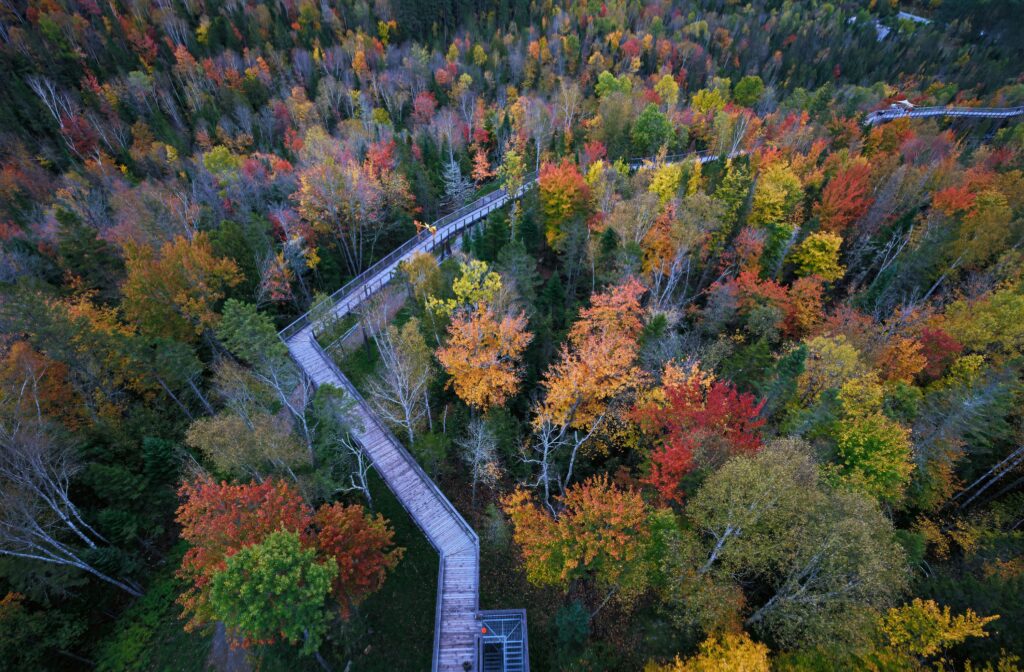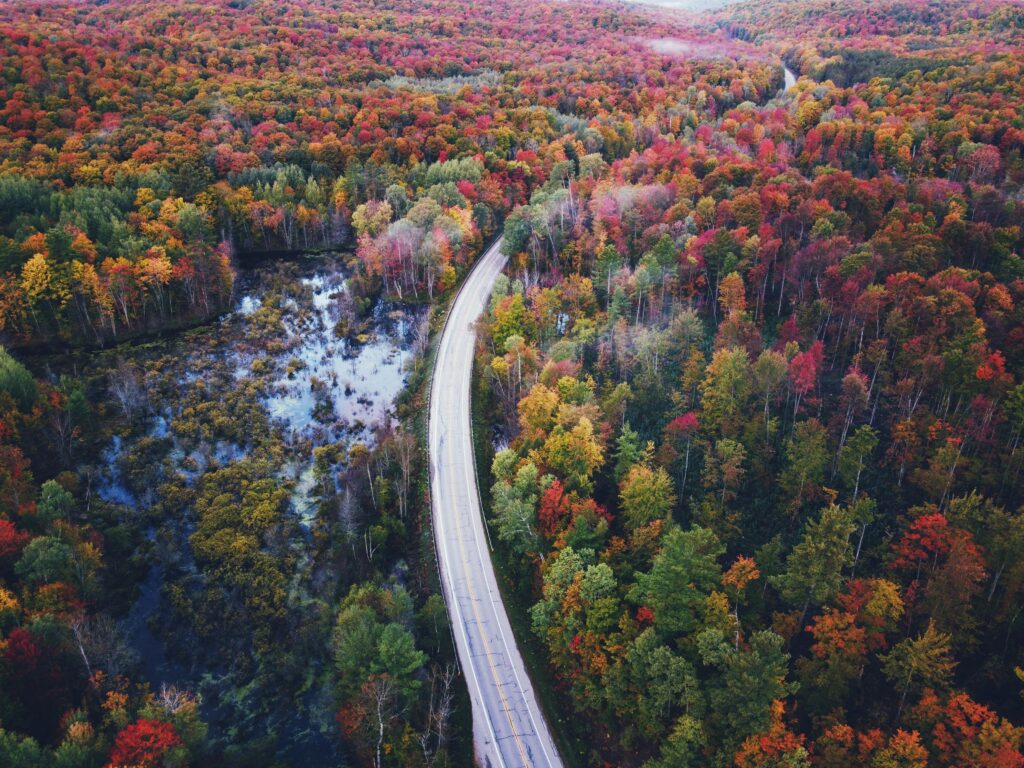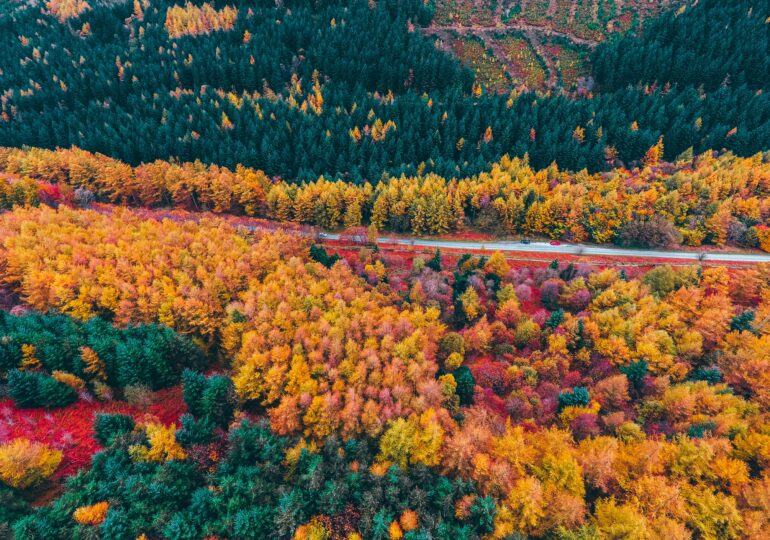Autumn brings one of nature’s most spectacular transformations: forests turn into a sea of yellow, red, and orange, and landscapes appear as if painted by an invisible hand. Science explains what causes this change – chlorophyll disappears, and other pigments come to the surface. But the reason why trees have evolved to color their leaves so intensely before losing them remains a mystery that continues to intrigue scientists.
Traveling in the midst of October through Duchess County, New York, you are surrounded by a visual symphony: golden yellow, bright red, incandescent orange. The leaves seem to burst into light, like fireworks heralding the arrival of cold weather, note the journalists at BBC.
Further north, in Maine, the colors are more muted. "In a fall like this, some plants age much earlier because they are stressed by drought," explains ecologist Amanda Gallinat from Colby College, Waterville. From her window, she already sees many leaves turned brown.
Why England has more yellow, and Japan more red
And on the other side of the Atlantic, in the United Kingdom, leaves change color in autumn, but the dominant tones are yellow. This is due to native species - beech, maple, and oak - explains David Wilkinson, an evolutionary ecologist at the University of Lincoln. "The most colorful are usually imported species," he says, such as sumac, native to Mediterranean regions, Asia, and North America.
In Japan, maples transform landscapes into paintings of red, violet, and gold, attracting thousands of tourists. The "leaf peeping" phenomenon - admiring and photographing autumn leaves - has become an attraction in itself in many countries. However, the reason why trees undergo this metamorphosis remains a mystery.

Chemistry and evolution
The chemical process is clear: yellow leaves have always been yellow, their pigment - becoming visible only when green chlorophyll decomposes and is reabsorbed by the plant. Red or violet leaves, in addition to losing chlorophyll, also produce a new pigment: anthocyanin, found in fruits or vegetables.
The persistence of these annual changes despite natural selection suggests an evolutionary advantage. Genetic analyses show that the production of autumn pigments appeared relatively late, after trees had already learned to recover chlorophyll.
When leaves defend themselves
An influential theory suggests that intense red evolved to scare pests, acting as a warning signal. Another theory, the photoprotection theory, argues that pigments protect leaves from sunlight, acting as a "protective cream" during seasonal degradation. Anthocyanins are powerful antioxidants that defend leaf cells from oxidative stress caused by strong autumn light.
"Color change is primarily a phenomenon of the northern hemisphere," explains Susanne Renner, an evolutionary biologist at Washington University in St. Louis. Analysis of over 2,300 tree species has shown that only a small portion changes color: 290 become red and 378 yellow. Red colors have evolved independently at least 25 times.

Why America and Asia are more colorful
Most trees with red autumn leaves live in eastern North America and East Asia. In North America, 89 species turn red, while in Asia, 152 do. In Northern Europe - only 24. Although temperature might be thought to explain the difference, solar radiation seems to play a more significant role. Areas in America and Asia receive more light and experience sudden temperature variations, favoring the formation of protective pigments.
"In September and October, North America receives a lot of light, and leaves need additional protection," says Renner. Anthocyanins act as a barrier against radiation, and carotenoids provide a similar but weaker effect.
Signals for insects or mere illusions?
Another hypothesis, coevolution with insects, suggests that red leaves warn aphids and other pests that the tree is not a suitable host. However, research shows that insects cannot perceive red as humans do - to them, leaves appear gray or black.
Some experts believe that aphids avoid red leaves because they associate them with the death of the plant, an idea called the "camouflage theory." However, red pigment is energetically costly for trees, and studies show that yellow, rather than repelling, attracts aphids.

Two theories, one common purpose
Wilkinson believes that both theories can be true: "There is no reason to choose between solar protection and signaling - it is possible that both mechanisms work simultaneously."
Other hypotheses suggest that anthocyanins do not protect but help break down carbohydrates in leaves.
Human impact and climate change
Over millennia, humans have influenced the evolution of trees: we have cut down the less spectacular ones and cultivated species with more colorful leaves. In urban environments, higher temperatures can intensify red hues - a possible new evolutionary step.
What is certain is that climate change alters both the timing and intensity of colors. "Warmer autumns and drought, both linked to climate change, lead to paler colors and leaves that wither earlier," says Gallinat. "And plants with shallow roots - those that produce the brightest colors - are also the most vulnerable."

